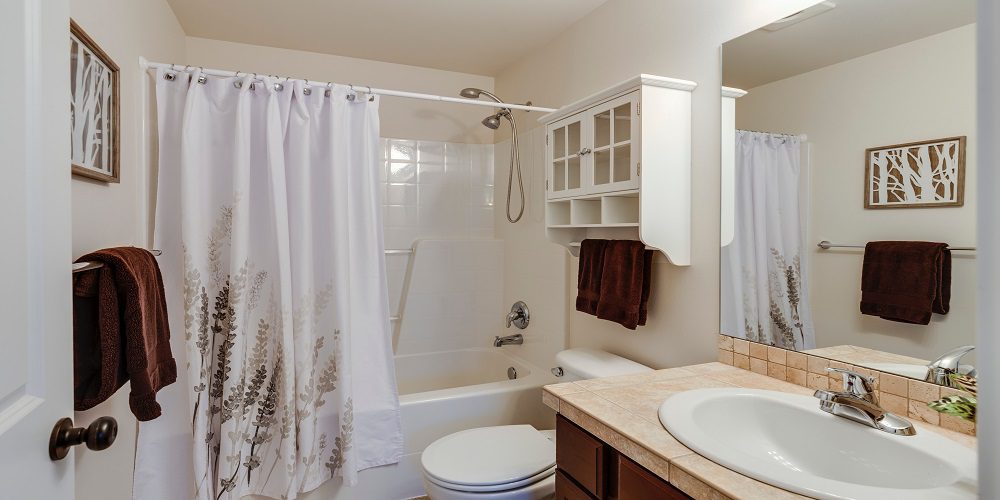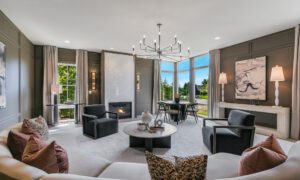Welcome to our blog, where we dive deep into the fascinating world of home improvements! Are you torn between budget-friendly upgrades and indulging in luxurious renovations? Well, fret not, because today we’re here to decode the various types of home improvements. Whether you’re a thrifty DIY enthusiast or an aspiring interior design aficionado, this post will help you navigate through the choices and find the perfect balance between cost-effectiveness and luxury.
Introduction
Owning a home is a dream for many people, and once that dream becomes a reality, it is important to maintain and improve its value. Home improvements not only enhance the aesthetic appeal of your property but also increase its functionality and efficiency. Whether you are planning to sell your house in the future or simply want to create a more comfortable living space for yourself, investing in home improvements can bring numerous benefits.
Understanding the Different Types of Home Improvements
There are many reasons why homeowners may choose to undertake home improvements, from increasing the functionality and efficiency of their living space to adding value to their property. However, not all home improvements are created equal. There are various types of upgrades that can be done to a home, each with different levels of cost and impact.
Understanding the different types of home improvements is crucial in order for homeowners to make informed decisions about how they want to upgrade their living space. In this section, we will delve into the various categories of home improvements and provide insights on what each one entails.
1. Structural Improvements: These types of upgrades involve changes made to the basic structure or layout of a home. This could include additions such as building extensions or converting unused spaces like attics or basements into functional rooms. Structural improvements require careful planning and often come with a higher price tag due to the need for permits and skilled labor.
2. Aesthetic Improvements: As the name suggests, these upgrades focus on improving the appearance of a home. This can include painting walls, replacing flooring, upgrading fixtures and fittings, or even adding decorative elements like crown molding or wallpaper. While aesthetic improvements may not have a significant impact on functionality, they can greatly enhance the overall look and feel of a space at a relatively lower cost compared to structural changes.
3. Functional Improvements: These types of upgrades aim to improve the practicality and efficiency of a home by enhancing its features or systems. Examples include installing energy-efficient appliances, upgrading heating and cooling systems, or adding smart home technology. Functional improvements not only make a home more comfortable to live in, but they can also save money on utility bills in the long run.
4. Outdoor Improvements: Outdoor upgrades focus on enhancing the exterior of a home and its surrounding landscape. This could involve adding a deck or patio, landscaping the garden, installing outdoor lighting, or building a swimming pool. Outdoor improvements not only add aesthetic value to a property, but they can also create additional living space for homeowners to enjoy.
5. Maintenance Improvements: These types of upgrades involve tackling necessary repairs and maintenance tasks that are essential for the upkeep of a home. This could include fixing leaks, replacing damaged roofing, repairing cracks in walls, or updating outdated electrical or plumbing systems. While maintenance improvements may not be as exciting as other types of upgrades, they are crucial for the long-term health and functionality of a home.
6. Safety and Security Improvements: These upgrades focus on making a home safer and more secure for its occupants. Examples include installing security cameras or alarms, reinforcing doors and windows with stronger locks, or adding motion-sensor lights. Safety and security improvements not only provide peace of mind for homeowners but may also lower insurance premiums.
Examples and Cost Breakdowns
When it comes to home improvements, there are countless options available. Some may require a large investment, while others can be done on a budget. To help you make informed decisions about which upgrades are the best fit for your home, we have compiled some examples and cost breakdowns of popular home improvement projects.
1. Kitchen Upgrades:
Kitchen renovations are one of the most popular and expensive home improvement projects. However, there are ways to upgrade your kitchen without breaking the bank.
a. Installing new countertops: This is a great way to give your kitchen a fresh look without spending too much money. The average cost of installing new countertops ranges from $2,000 to $4,500, depending on the material chosen.
b. Refacing cabinets: Instead of replacing all your kitchen cabinets, consider refacing them. This involves changing the cabinet doors and drawer fronts while keeping the existing structure intact. The average cost for refacing cabinets is between $4,000 and $9,000.
c. Adding a backsplash: A backsplash can add color and texture to your kitchen while protecting your walls from splashes and stains. Depending on the material chosen, adding a backsplash can cost anywhere from $600 to $3,500.
2. Bathroom Upgrades:
Bathroom renovations can also be costly, but with some smart choices, you can achieve a luxurious look without spending too much money.
a. Updating fixtures: Swapping out old faucets and showerheads with newer models is an affordable way to give your bathroom a fresh look. The cost of updating fixtures can range from $300 to $1,000.
b. Replacing the toilet: A new toilet can improve the overall appearance and functionality of your bathroom. The average cost of replacing a toilet is between $300 and $500.
c. Upgrading lighting: Installing new light fixtures or adding additional lighting can brighten up your bathroom and make it more inviting. The cost of upgrading lighting can vary depending on the type and number of fixtures, but typically ranges from $100 to $500.
3. Flooring:
Updating the flooring in your home can dramatically change the look and feel of any room. Here are some popular options and their average costs:
a. Hardwood flooring: Hardwood floors are durable, timeless, and can increase the value of your home. The average cost of installing hardwood floors is between $6 and $22 per square foot.
b. Laminate flooring: A budget-friendly alternative to hardwood, laminate flooring can give you the look of wood at a fraction of the cost. The average cost for installation is between $3 and $8 per square foot.
c. Carpeting: Carpet is a comfortable and affordable option for bedrooms, living rooms, and other areas where you want a cozy feel. The average cost for carpet installation is between $1 and $11 per square foot.
4. Exterior Upgrades:
Improving the exterior of your home not only adds curb appeal but can also increase its value. Here are some upgrades and their costs:
a. Painting: A fresh coat of paint can make your home look new again. The average cost of exterior painting ranges from $2,000 to $5,000, depending on the size of your home.
b. Landscaping: Adding plants, flowers, and other landscaping elements can enhance the appearance of your home. The cost of landscaping varies greatly depending on the scope of the project but can range from a few hundred dollars to several thousand.
c. Siding Replacement: Replacing old siding with newer, more durable options such as vinyl or fiber cement can give your home a facelift while also improving its energy efficiency. The average cost for siding replacement is between $6,000 and $16,000.
5. Energy Efficiency Upgrades:
Upgrading your home’s energy efficiency not only helps the environment but can also save you money in the long run.
a. Installing energy-efficient windows: Replacing old windows with energy-efficient ones can help reduce heating and cooling costs. The average cost for window replacement is between $450 and $1,000 per window.
b. Adding insulation: Proper insulation in your home can improve energy efficiency and reduce heating and cooling costs. The average cost of adding insulation is between $1,500 and $2,000.
c. Installing a programmable thermostat: This allows you to set the temperature according to your schedule, resulting in energy savings. The average cost of a programmable thermostat is between $100 and $300.
6. Other upgrades:
There are many other home improvement projects that may appeal to you, depending on your needs and budget.
a. Roof replacement: A new roof not only improves the appearance of your home but also protects it from the elements. The average cost for a roof replacement is between $5,000 and $10,000.
b. Basement finishing: Finishing an unfinished basement can add valuable living space to your home. The cost of finishing a basement varies greatly depending on the size and scope of the project, but can range from $10,000 to $30,000.
c. Home security system: Adding a security system can give you peace of mind and potentially reduce a homeowner’s insurance premiums. The cost of installation can range from a few hundred dollars to several thousand dollars, depending on the features and level of security.
Conclusion
It’s important to keep in mind that the costs listed above are just average estimates and can vary depending on factors such as location, materials used, and labor costs. Before starting any home improvement project, do thorough research and get multiple quotes from reputable contractors. This will help you make informed decisions and stay within your budget.



































